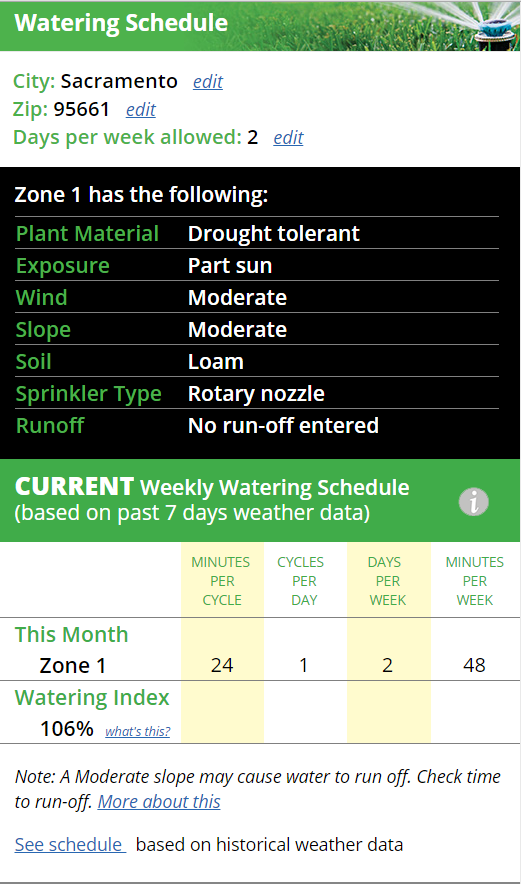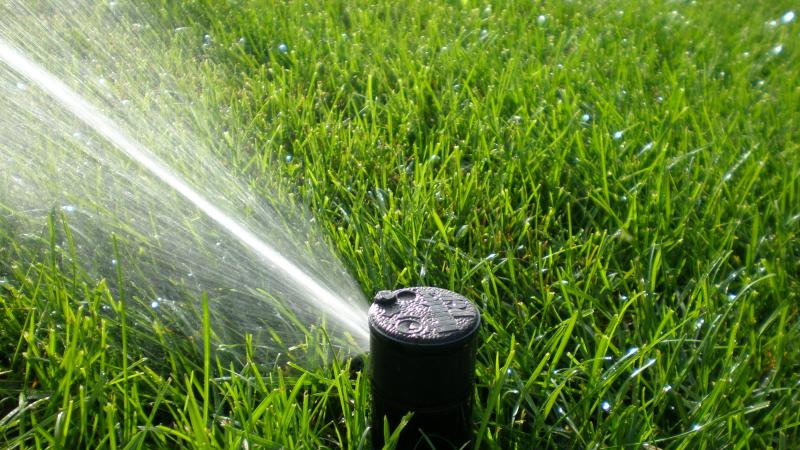For those of you who insist on having that green lawn, whether for your kids to play in or for your dogs to roll in, there’s a better solution than watering everyday. Read below for ways to handle the water restrictions and keep your lawn looking green and full.

With the water restrictions in California, I think now is a great time to revisit the proper way to irrigate your lawn. We have some say they will be taking out their lawns due to the water restrictions, but before you do so I think it is important to take everything into consideration.
Did you know that the front lawn of eight homes has the cooling effect in hot weather of about 70 tons of air conditioning? A home lawn will be 30 degrees cooler than asphalt, and 15 degrees cooler than bare soil. Some people will gladly take the heat over using water for a lawn, but would they make the same choice if they saw their bill drop dramatically when they watered properly?
Basics of Watering & Watering Restrictions
When turfgrass is first installed, like all plants it will require sufficient water until it is rooted down. Within two weeks a warm season grass, like bermudagrass or paspalum, has adapted to its new home and is well rooted into the soil. After a grass is rooted into the soil it is important to begin training your lawn to handle stress.
Grass will adapt no matter where it is. If you cut the water back to two to three times per week, it will force your grass to grow a longer root system. Think about this in terms of the tree in your front yard. Like your lawn the tree is providing the same type of cooling for your home, but do you water it every day? No, because the tree would fall over from having a shallow root system. Grass is the same. If you water it every day you will never develop a root system and it will struggle during the heat of the summer. It never has to adapt if you’re always giving it water. So lesson one is to go out and cut out several days a week you water. This alone will cut your turfgrass water use rate by 25%.
Watering your lawn can be tricky, but with the right irrigation system you can reduce your water by another 25%. The first step is setting up an automatic irrigation system. The old fashioned way of moving a hose and sprinkler around a yard is both inefficient, and a waste of water. Once the irrigation system is installed you will want to add a timer. This way if you need to water 15 minutes, you water 15 minutes. If you set a sprinkler out to water 15 minutes you will probably forget to move it.
When to water?
If you live in the Sacramento Water District, there are certain guidelines on when to water and how much to water. This does not mean you have to water twice a week; your lawn simply needs to be replenished when your lawn is starting to show symptoms of stress. One of the first signs of stress is the blue/gray color in your lawn, or inability for it to bounce back up after you walk on it. Instead of setting your clock to run every day or every other day, just run water when it is necessary.
There is also a free tool that analyzes your sprinkler type, your grass type and other factors. If you know the type of soil and grass this is a great alternative.
Low Maintenance Drought Resistant Lawns
In arid parts of the country or areas with water restrictions, drought tolerant grasses are recommended for their ability to withstand extended periods without water. Certain species of grass are better equipped to handle drought because of their native conditions and some grasses are improved cultivars, bred for their drought resistance. Drought resistant grasses are one part of a drought tolerant lawn, along with healthy soil and proper cultural practices.
Cool season drought tolerant grasses vary in their drought tolerance, some need supplemental watering while others can survive on occasional rain alone. Some grow in natural looking clumps and can be too bumpy to serve as a play area, so it is important to choose the right plant for the right purpose.
Park Avenue Turf has the expertise to assist you in selecting the right choice of drought-tolerant grass for your home.

